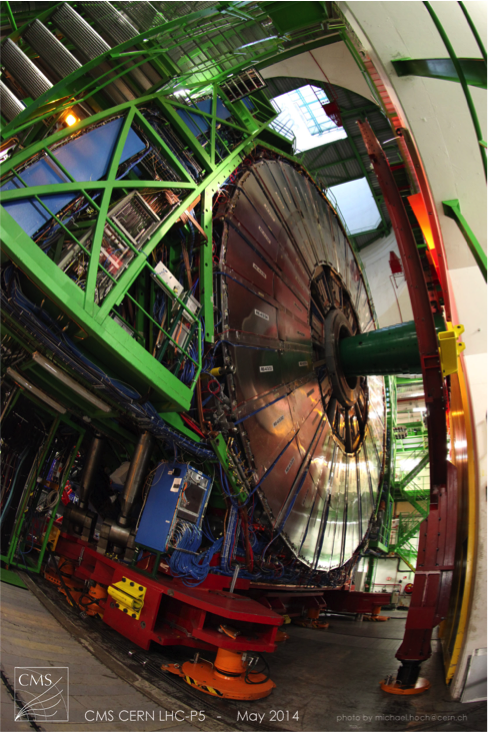
On May 4th the RPC subproject successfully completed the installation of the RE4 upgrade detector.
The first disk was installed in December 2013, while the installation of the second disk (fig. 1) was scheduled in two time windows; the first, about a week long, at the beginning of May 2014 and a second in July 2014.
Thanks to the great job done by the RPC construction groups and the large effort provided by the RPC installation team and also by the CMS Technical Coordination group, we were able to complete the installation and cabling in the first time window (from April 25th to May 4th).
The installation team, composed of nine people from Pakistan, Italy, Bulgaria and CERN, succeeded in installing all 36 super-modules in less than five days, working during any available time slot, in agreement with the full CMS schedule, and using holidays and the weekend to complete the operation. The following four days were used to cable and to connect the detectors to the trigger-DAQ, power. Gas and cooling services is currently ongoing.
Each RPC super-module weighs about 170 kg and a full disk is connected to the power and readout systems by using about 13 km of cable and 14000 connectors. The gas and cooling pipes are about 2,5 km long and have been fully tested before having been connected to the chambers.
The RE4 system consists of 72 super-modules, each of which is made by two RPCs, for a total of 144 double-gap RPCs. The RE4 detectors are going to instrument two disks, called RE+ and RE-, located at detector extremities, each disks is made of two rings: the inner ring is called RE4/2 while the outer ring is called RE4/3. In each of the two rings there are 36 trapezoidal shaped detectors, as shown in Fig. 2, built in three different assembly sites: India (BARC), Belgium (Ghent University) and Switzerland (CERN). BARC and Ghent were in charge of 25% of the production respectively while the remaining 50% of the production was carried by CERN.
About 50 physicists, engineers and technicians from Belgium, Bulgaria, China, Colombia, Egypt, Finland, Georgia, India, Italy, Korea, Mexico, Pakistan, Poland and Switzerland have contributed to the RE4 project. It is only thanks to their competence, passion and dedication that it was possible to fulfill this extremely important milestone both in time and budget.
Last but not least: the RE4 project has been an important school for more than 20 Masters’ and PhD students from around the world. In turn, they injected the enthusiasm and optimism that were sp necessary to work in the most effective manner.
Pigi Paolucci and Anton Dimitrov for the RPC collaboration
- Log in to post comments

